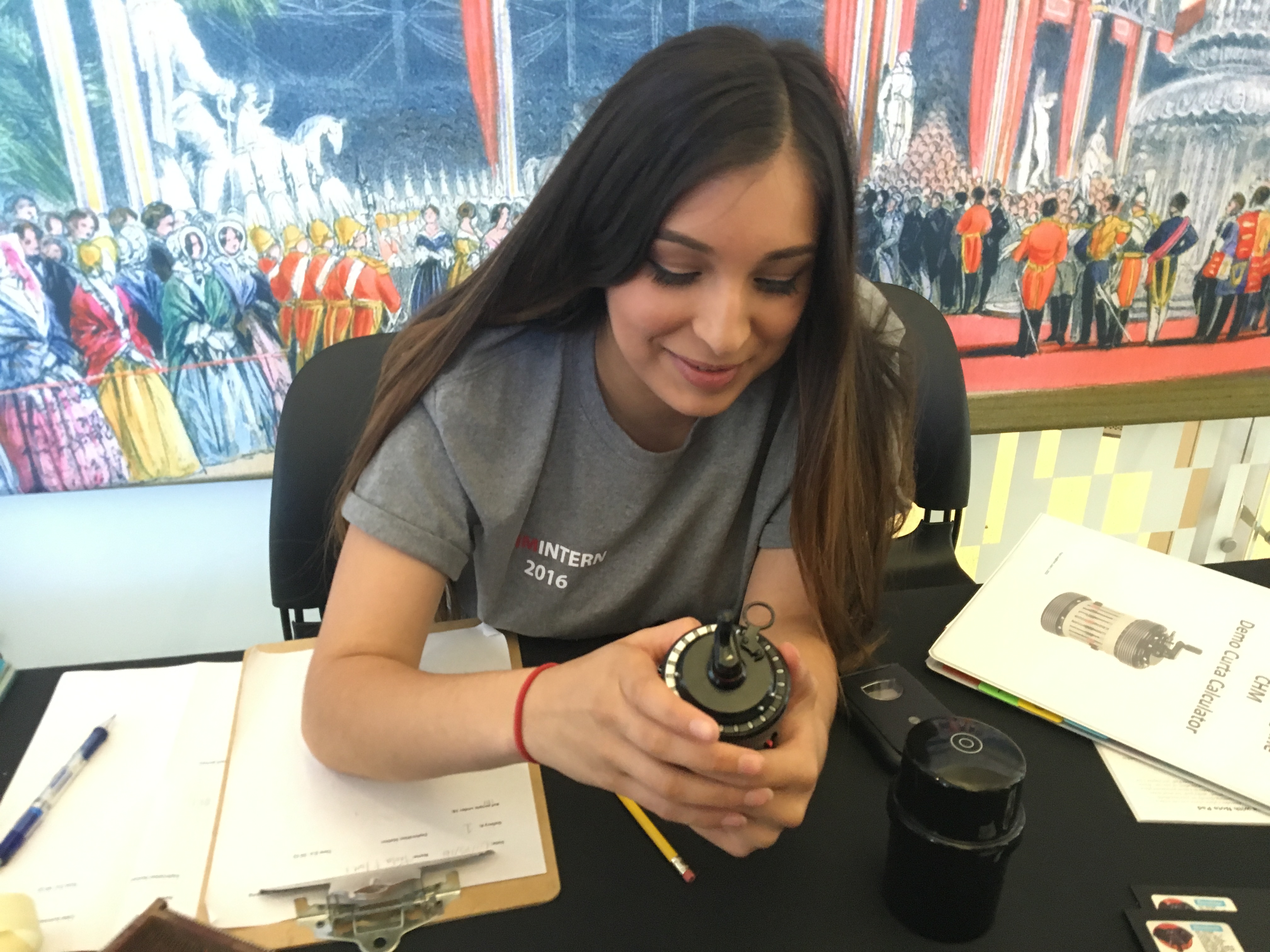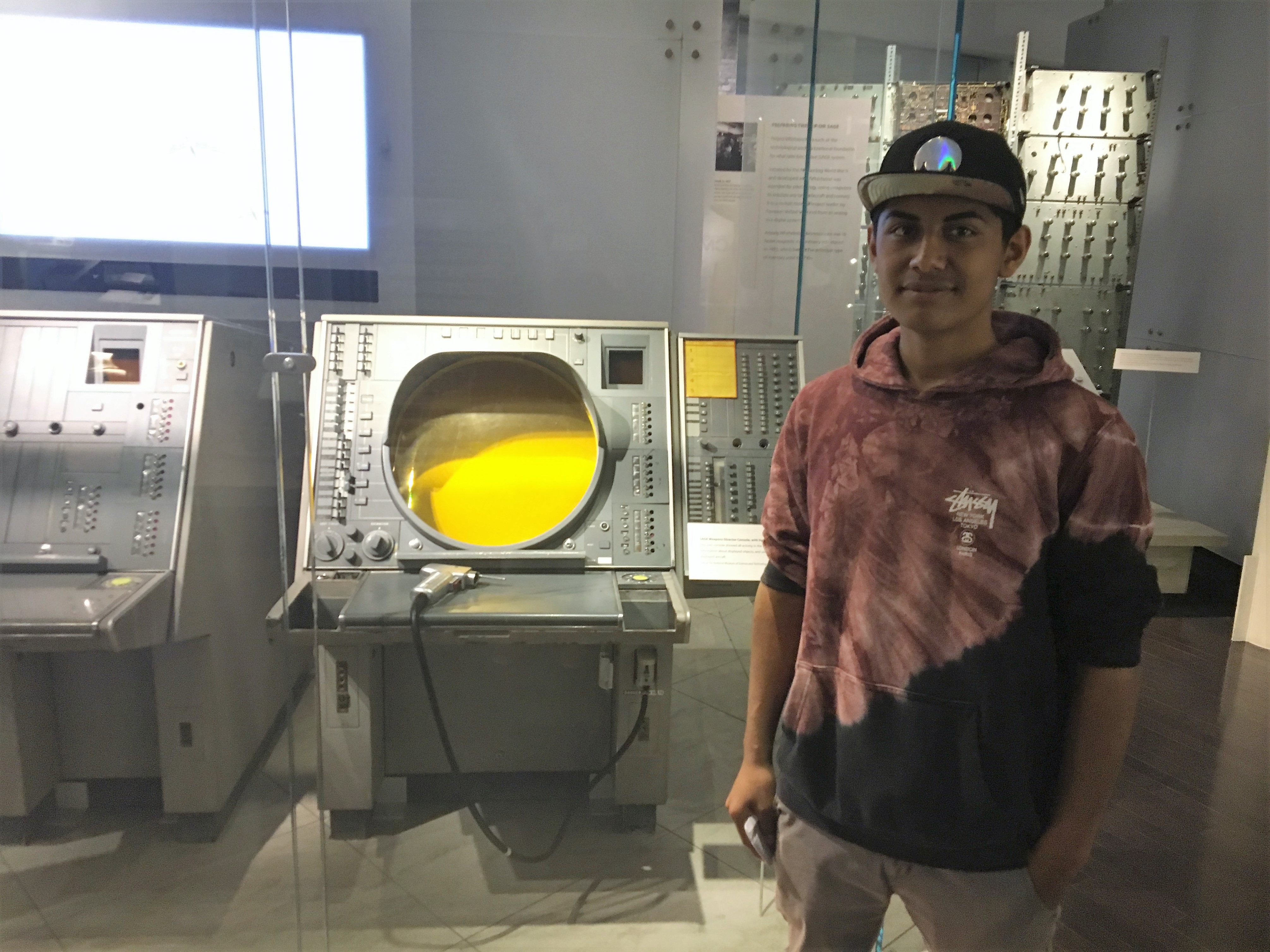
Can a summer internship change a young person’s life? That may not have been what a group of Pescadero students were expecting when they went to work at the Computer History Museum in Mountain View, a brand-new internship opportunity through Puente’s summer youth program (formally known as the Puente Leadership Development and Employment Program).
Rafael Navarrete and Paola Flores are both students at Pescadero High with an interest in engineering – Navarrete, 15, has always wanted to be an electrical engineer (“anything with a plug,” as he puts it) and Flores, 16, is thinking about becoming a civil engineer. They both grew up in large families of modest means, and when they enter college, they will be the first of their families to get there.
Neither of them had heard of the Computer History Museum (CHM) or spent much time in Mountain View prior to the summer. But when Puente offered them the opportunity, they jumped at it.
Three days a week, Navarrete, Flores and two other Puente youth made the 3-hour roundtrip commute to the museum on a bus paid for by Puente. They spent the entire day on their feet working as gallery interpreters, interacting with museum guests, answering questions, demonstrating computer artifacts and offering historical context.
But first, they had to spend two weeks researching their gallery topics – for Flores, it was calculators; for Navarrete, mini-computers.
“I gained knowledge about computers that could help me in the future – how they started, how they work,” says Navarrete.
“I didn’t think it was going to be as fun as it was. I thought I was just going to learn, and I did, but it was fun to learn, which was good,” adds Flores.
Both students had to overcome their own shyness and fear of public speaking in order to approach museum-goers and ask if they wanted to know more about the artifacts in CHM’s exhibition. They also got to see and touch some extraordinary artifacts, including the top-secret German encryption machine known as ENIGMA; and they had a chance to play a game of PONG on a 1972 Atari Pong Prototype. They even played against one of the game’s designers when he visited the museum one day.
The new museum partnership is an example of how the Puente summer program is evolving. This summer drew 34 students, aged 14 to 21, to Puente’s youth program, which is now in its tenth year. Puente gives local youth paid job experience with a number of local programs and nonprofits like the Half Moon Bay Library, YMCA Camp Jones Gulch and the La Honda-Pescadero Unified School District Panther Camp. Some students intern inside Puente’s offices.
Lizeth Hernandez, Puente’s Education Director, says some young people have told her that they would enjoy doing internships that are more closely matched to their personal and professional interests. So that’s her next goal. “Let’s widen the partnerships we have so that students can apply to specific internships, as opposed to the internship program as a whole,” says Hernandez. “It’s about exposing them to incredible opportunities in the world outside of Pescadero, outside of Half Moon Bay.”
Maya Makker, Educator, Community Programs at the Computer History Museum, personally interviewed all four Puente youth before admitting them to the museum’s summer internship program. “We’re looking for students who have a genuine curiosity for the content here – if they’re not excited, they’re not going to convey that to the visitor,” she says. She was impressed with their performance and looks forward to seeing more Puente students next summer.
They were also the only bilingual Latino students in the program, which was unexpectedly helpful. “We get a lot of visitors who speak Spanish, and I would turn to them frequently to guide visitors through the museum. Even if it wasn’t an artifact they had studied, they were able to step up,” says Makker.
The Computer History Museum opened in its present building in Mountain View in 2002. Its signature exhibition, Revolution: The First 2000 Years of Computing, opened in 2011. It has more than 20 galleries, and that is where the students worked.
Flores is a whiz at math and can work complex math problems in her head. She is already taking calculus at Cañada College this year, even though she is still a high school senior. Navarrete likes to take things apart and put them back together again – bikes, toys, machines, car parts.

Both students emerged with an even stronger interest in STEM, which stands for science, technology, engineering and math. “So now I’m thinking, maybe we can get them an internship in an engineering lab at a university or at a firm – to get our students that hands-on experience of what it’s like to connect a circuit board, or how to build robots,” says Puente’s Hernandez.
Several other Puente youth got hands-on experience this summer. One young man had an automotive internship working at a garage in San Mateo, fixing cars and learning how to run a business. Another student worked in a dentist’s office to explore a career interest in becoming a dental hygienist.
And there’s more to come. Hernandez is already investigating the possibility of a partnership with the Half Moon Bay Review for students who want to flex their writing skills. There is also some interest in photography, video graphics programming and fashion design. “Our students have such a broad range of interests, and I’m extremely hopeful I can catch most of them,” says Hernandez.
College is on the horizon for Navarrete and Flores – especially Flores, who is about to apply to several of them. Cornell University is her first choice. Her summer at the museum gave her a dose of clarity about her future. “I wanted to know if I wanted to work in technology in the future. I wasn’t sure if I did. I kind of wanted to do civil engineering. I still find it interesting, but civil engineering, I like that more,” she says.
Navarrete’s summer internship expanded his whole world. “After the summer was over I realized there were more possibilities of engineering that I liked. Now I’m considering becoming an aeronautical engineer.” He could see himself working for Boeing, Google or Tesla, building next-generation airplanes, self-driving cars or rocket ships. His dream internship is with Google X, Google’s so-called “moonshot factory.”
When he thinks about it, there’s nothing he can’t do. “I’ve got a lot of choices,” he says.
This program is sponsored by the Sobrato Family Foundation, Philanthropic Ventures Foundation, Wells Fargo, and many individual donors.
To support this program for the 2017 summer cohort, donate today.


